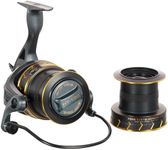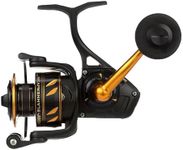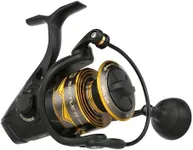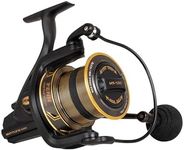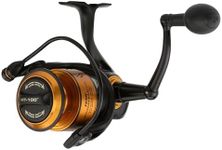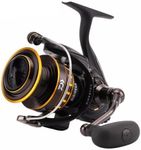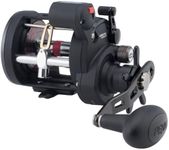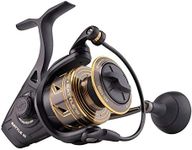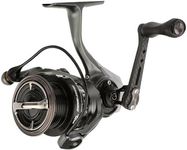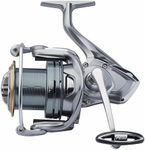Buying Guide for the Best Saltwater Reels
Choosing the right saltwater reel is crucial for a successful and enjoyable fishing experience. Saltwater reels are designed to withstand the harsh conditions of the ocean, including salt, sand, and the powerful pull of large fish. When selecting a saltwater reel, it's important to consider the type of fishing you plan to do, the species you are targeting, and your personal preferences in terms of handling and comfort. Understanding the key specifications of saltwater reels will help you make an informed decision that suits your needs.MaterialThe material of a saltwater reel is important because it determines the reel's durability and resistance to corrosion. Common materials include aluminum, graphite, and stainless steel. Aluminum is strong and lightweight, making it a popular choice for many anglers. Graphite is lighter and more resistant to corrosion but may not be as strong as aluminum. Stainless steel is highly durable and resistant to corrosion but can be heavier. Choose a material based on your need for durability versus weight, and consider the conditions in which you'll be fishing.
Drag SystemThe drag system controls the amount of resistance a fish feels when it pulls on the line. This is crucial for tiring out large fish without breaking the line. There are two main types of drag systems: star drag and lever drag. Star drag systems are typically found on spinning reels and are easy to adjust, making them suitable for beginners. Lever drag systems offer more precise control and are often used in big game fishing. Consider the size of the fish you are targeting and your level of experience when choosing a drag system.
Gear RatioThe gear ratio of a reel indicates how many times the spool rotates with one turn of the handle. A higher gear ratio means faster line retrieval, which is useful for catching fast-moving fish. Lower gear ratios provide more power and are better for reeling in heavy fish. Common gear ratios range from 4:1 to 6:1. If you plan to fish for fast species like tuna, a higher gear ratio is beneficial. For larger, slower fish like grouper, a lower gear ratio may be more appropriate.
Line CapacityLine capacity refers to the amount of fishing line that a reel can hold. This is important for ensuring you have enough line to handle long runs from big fish. Line capacity is usually measured in yards and is specified for different line weights. If you are targeting large, powerful fish, you will need a reel with a higher line capacity to prevent being spooled. Consider the type of fish and the fishing environment to determine the appropriate line capacity for your needs.
Reel SizeReel size affects the overall weight and balance of your fishing setup. Larger reels can hold more line and are generally more powerful, making them suitable for big game fishing. Smaller reels are lighter and easier to handle, which can be advantageous for long fishing sessions or when targeting smaller species. Choose a reel size that matches the type of fishing you plan to do and the size of the fish you are targeting. Balance is key, so ensure the reel complements your rod and line setup.

